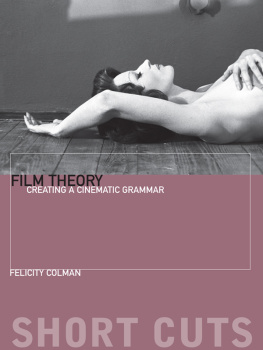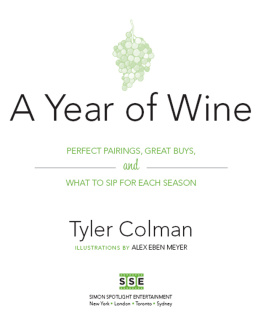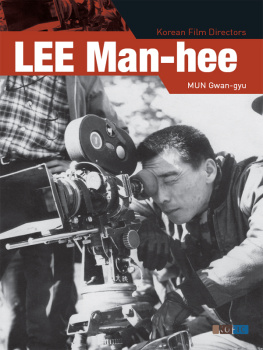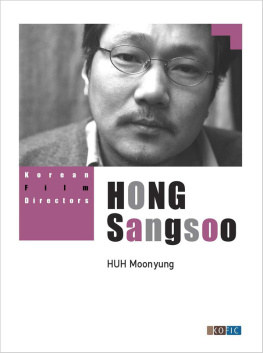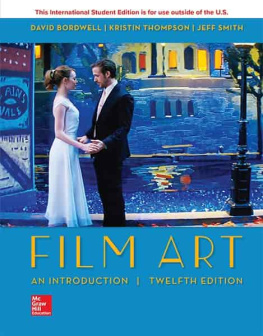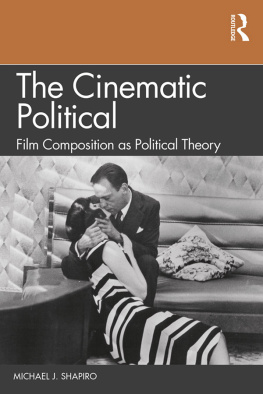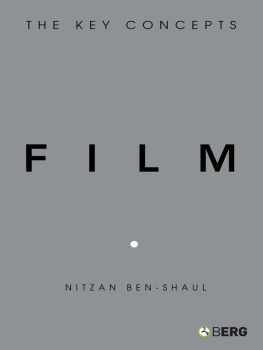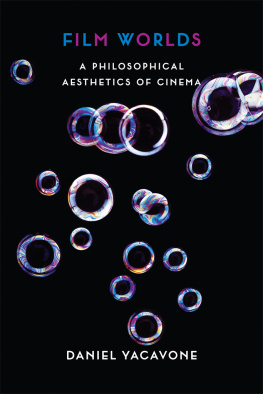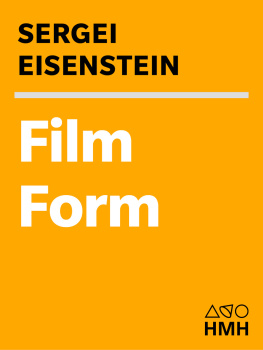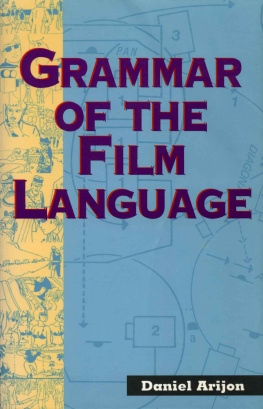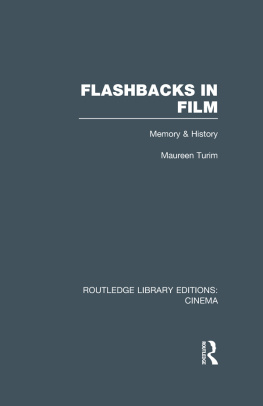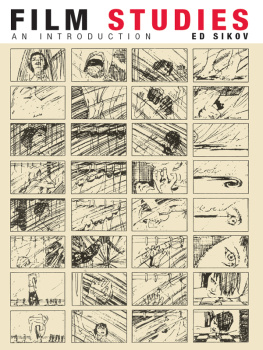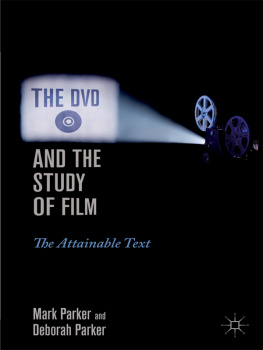SHORT CUTS
INTRODUCTIONS TO FILM STUDIES
OTHER SELECT TITLES IN THE SHORT CUTS SERIES
THE HORROR GENRE: FROM BEELZEBUB TO BLAIR WITCH Paul Wells
THE STAR SYSTEM: HOLLYWOODS PRODUCTION OF POPULAR IDENTITIES Paul McDonald
SCIENCE FICTION CINEMA: FROM OUTERSPACE TO CYBERSPACE Geoff King and Tanya Krzywinska
EARLY SOVIET CINEMA: INNOVATION, IDEOLOGY AND PROPAGANDA David Gillespie
READING HOLLYWOOD: SPACES AND MEANINGS IN AMERICAN FILM Deborah Thomas
DISASTER MOVIES: THE CINEMA OF CATASTROPHE Stephen Keane
THE WESTERN GENRE: FROM LORDSBURG TO BIG WHISKEY John Saunders
PSYCHOANALYSIS AND CINEMA: THE PLAY OF SHADOWS Vicky Lebeau
COSTUME AND CINEMA: DRESS CODES IN POPULAR FILM Sarah Street
MISE-EN-SCNE: FILM STYLE AND INTERPRETATION John Gibbs
NEW CHINESE CINEMA: CHALLENGING REPRESENTATIONS Sheila Cornelius with Ian Haydn Smith
ANIMATION: GENRE AND AUTHORSHIP Paul Wells
WOMENS CINEMA: THE CONTESTED SCREEN Alison Butler
BRITISH SOCIAL REALISM: FROM DOCUMENTARY TO BRIT GRIT Samantha Lay
FILM EDITING: THE ART OF THE EXPRESSIVE Valerie Orpen
AVANT-GARDE FILM: FORMS, THEMES AND PASSIONS Michael OPray
PRODUCTION DESIGN: ARCHITECTS OF THE SCREEN Jane Barnwell
NEW GERMAN CINEMA: IMAGES OF A GENERATION Julia Knight
EARLY CINEMA: FROM FACTORY GATE TO DREAM FACTORY Simon Popple and Joe Kember
MUSIC IN FILM: SOUNDTRACKS AND SYNERGY Pauline Reay
MELODRAMA: GENRE, STYLE, SENSIBILITY John Mercer and Martin Shingler
FEMINIST FILM STUDIES: WRITING THE WOMAN INTO CINEMA Janet McCabe
FILM PERFORMANCE: FROM ACHIEVEMENT TO APPRECIATION Andrew Klevan
NEW DIGITAL CINEMA: REINVENTING THE MOVING IMAGE Holly Willis
THE MUSICAL: RACE, GENDER AND PERFORMANCE Susan Smith
TEEN MOVIES: AMERICAN YOUTH ON SCREEN Timothy Shary
FILM NOIR: FROM BERLIN TO SIN CITY Mark Bould
DOCUMENTARY: THE MARGINS OF REALITY Paul Ward
THE NEW HOLLYWOOD: FROM BONNIE AND CLYDE TO STAR WARS Peter Krmer
ITALIAN NEO-REALISM: REBUILDING THE CINEMATIC CITY Mark Shiel
WAR CINEMA: HOLLYWOOD ON THE FRONT LINE Guy Westwell
FILM GENRE: FROM ICONOGRAPHY TO IDEOLOGY Barry Keith Grant
ROMANTIC COMEDY: BOY MEETS GIRL MEETS GENRE Tamar Jeffers McDonald
SPECTATORSHIP: THE POWER OF LOOKING ON Michele Aaron
SHAKESPEARE ON FILM: SUCH THINGS THAT DREAMS ARE MADE OF Carolyn Jess-Cooke
CRIME FILMS: INVESTIGATING THE SCENE Kirsten Moana Thompson
THE FRENCH NEW WAVE: A NEW LOOK Naomi Greene
CINEMA AND HISTORY: THE TELLING OF STORIES Mike Chopra-Gant
GERMAN EXPRESSIONIST CINEMA: THE WORLD OF LIGHT AND SHADOW Ian Roberts
FILM AND PHILOSOPHY: TAKING MOVIES SERIOUSLY Daniel Shaw
CONTEMPORARY BRITISH CINEMA: FROM HERITAGE TO HORROR James Leggott
RELIGION AND FILM: CINEMA AND THE RE-CREATION OF THE WORLD S. Brent Plate
FANTASY CINEMA: IMPOSSIBLE WORLDS ON SCREEN David Butler
FILM VIOLENCE: HISTORY, IDEOLOGY, GENRE James Kendrick
NEW KOREAN CINEMA: BREAKING THE WAVES Darcy Paquet
FILM AUTHORSHIP: AUTEURS AND OTHER MYTHS C. Paul Sellors
THE VAMPIRE FILM: UNDEAD CINEMA Jeffrey Weinstock
HERITAGE FILM: NATION, GENRE AND REPRESENTATION Beln Vidal
QUEER CINEMA: SCHOOLGIRLS, VAMPIRES AND GAY COWBOYS Barbara Mennel
ACTION MOVIES: THE CINEMA OF STRIKING BACK Harvey OBrien
BOLLYWOOD: GODS, GLAMOUR AND GOSSIP Kush Varia
THE SPORTS FILM: GAMES PEOPLE PLAY Bruce Babington
THE HEIST FILM: STEALING WITH STYLE Daryl Lee
INTERNATIONAL POLITICS AND FILM: SPACE, VISON, POWER Sean Carter & Klaus Dodds
FILM THEORY
CREATING A CINEMATIC GRAMMAR
FELICITY COLMAN
A Wallflower Press Book
Wallflower Press is an imprint of
Columbia University Press
Publishers Since 1893
New York . Chichester, West Sussex
cup.columbia.edu
Copyright Felicity Colman 2014
All rights reserved.
E-ISBN 978-0-231-85060-5
Wallflower Press is a registered trademark of Columbia University Press.
A complete CIP record is available from the Library of Congress
ISBN 978-0-231-16973-8 (pbk. : alk. paper)
ISBN 978-0-231-85060-5 (e-book)
A Columbia University Press E-book.
CUP would be pleased to hear about your reading experience with this e-book at .
CONTENTS
Thank you to the students and teachers of film theory that I have worked with, and all encounters that have helped my thinking on and through this discipline, especially Angela Ndalianis and Barbara Creed.
Special thanks to Apollonia Zikos, Erin Stapleton, Anna Hickey-Moody, Roy and Dr Tang, who have helped me immeasurably in vital moments.
Thanks to Yoram Allon, Commissioning Editor at Wallflower Press, for his tireless support of the discipline of film studies.
Writing about Werner Herzogs documentary film Grizzly Man (2005) in Cineaste magazine, Conrad Geller reminds his readers of one of the unforgettable scenes of the bear-loving naturalist, Timothy Treadwell. Geller writes of a moment selected by Herzog from Treadwells video blog, where Timothy is fondling a large pile of bear dung. It was, he says, produced by one of his familiar bears, Wendy. Its still warm he says wonderingly. It was inside of her! Geller characterises this film through such scenes, later asking Did Treadwell do some good? He concludes that Grizzly Man comes down to a kind of metaphysical debate between Treadwell and Herzog (2005: 523).

